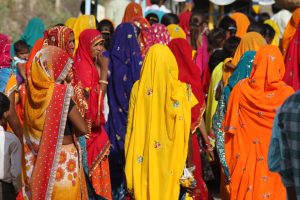The findings of India’s latest National Family Health Survey (NFHS-5) (2019-20) provide some reason for cheer but also concern. The survey reveals that the country is undergoing some interesting demographic transitions but there are serious developmental challenges too.
First conducted in 1992-93, the NFHS is “a large-scale, multi-round survey.” Some 0.6 million sample households from 707 districts were surveyed in two phases for NFHS-5.
Data collected is on a variety of issues and provides fascinating and useful insights into India’s population, demographic transitions, health and family welfare issues, nutrition, women’s empowerment, reproductive health, use of contraception, etc.
However, demographers take the NFHS figures with a pinch of salt. The sample size is very small, unlike the national decennial census which counts the entire population of the country. But since census figures take an inordinately long time to collect, collate and dissemble, NFHS findings provide policy makers with useful input of what they can expect in the upcoming census.
The fourth round of NFHS was conducted five years ago in 2015-16.
A positive finding of the NFHS-5 (2019-2020) survey is that India’s population has stabilized. Its total fertility rate (TFR), which is the average number of children a woman might bear during her lifetime, which was been declining – it was 2.7 in 2005-06 and 2.2 in 2015-16—is now 2; just below the replacement level of 2.1.
In his 2019 Independence Day speech, Prime Minister Narendra Modi said that India needs to “worry about the population explosion.” He called on governments at the state and central levels to take measures to control it.
India’s ruling Bharatiya Janata Party (BJP) has long-favored strong measures to control India’s population growth. In July this year, the BJP-ruled state of Uttar Pradesh introduced a population control bill that denies government jobs, promotions, subsidies and the right to contest elections to a person who has more than two children. Several other state governments are considering this measure too.
Population experts had disagreed with Modi back in 2019. They had argued that India’s population growth is slowing. The NFHS-5 survey confirms their view. The “findings bust the population-explosion myth and show that India must steer away from coercive measures of population control,” the Population Foundation of India said in a statement.
NFHS-5 also reveals that there are more women than men in India; 1,020 women for every 1,000 men compared to 991 for every 1,000 men as per NFHS-4 (2015-16) data. While women outnumbering men is a heartening new development, experts have raised doubts over the reliability of the data.
As activist Sabu George points out census figures have shown that there have been more men in India than women over the last 100 years. Even the 2011 census said that there were just 940 women for every 1,000 men. How did the “drastic change” of women outnumbering men happen over a span of just ten years, George asks. He has dismissed the NFHS-5 results as “suspect.”
India’s sex ratio at birth (SRB) has improved from 919 females to 1,000 males as per NFHS-4 to 929 females to 1,000 males in NFHS-5. Yet, this development provides cold comfort as India’s SRB is below the 952, the natural SRB recommended by World Health Organization.
India’s low SRB can be attributed to the deep prejudice that girls face. Unlike girls, who are seen as an economic burden on parents because of the practice of dowry, sons are preferred. Families celebrate the birth of a boy, a girl child’s arrival is reason for mourning.
If in earlier decades, people chose to kill new-born girls, the availability of technology to identify the sex of the fetus has resulted in women committing sex selective abortions to prevent a girl from being born. Pre-natal sex screening is banned in the country. Yet female feticide continues as reflected in India’s low SRB.
NFHS-5 reveals that institutional births have increased substantially from 79 percent to 89 percent nationwide. Institutional births mean that pregnant women and newborns get proper medical attention and this is visible in improving maternal and child health in the country. In addition, more women are opting for C-section deliveries.
Meanwhile, child marriage has come down only marginally over the past five years.
NFHS-5 data reveals that 78.6 percent of women have their own bank account compared to 53 percent five years ago. The percentage of women who said they had a say in making decisions relating to healthcare and major purchases for the family increased from 73.8 percent in 2015-16 to 92 percent in 2020-21.
Although Indian women seem to have a say in household decision-making, their situation is in the household is far from secure and is in fact worsening. NFHS-5 shows that the percentage of married women in the 18-49-year age group that have suffered spousal violence has more than doubled from 20.6 percent in 2014-15 to 44.5 percent per NFHS-5.
Distressingly, 30 percent of women surveyed said their husband was justified in beating them.
Patriarchal and misogynist attitudes continue to hold an iron grip over the thinking of Indian men and women.

































